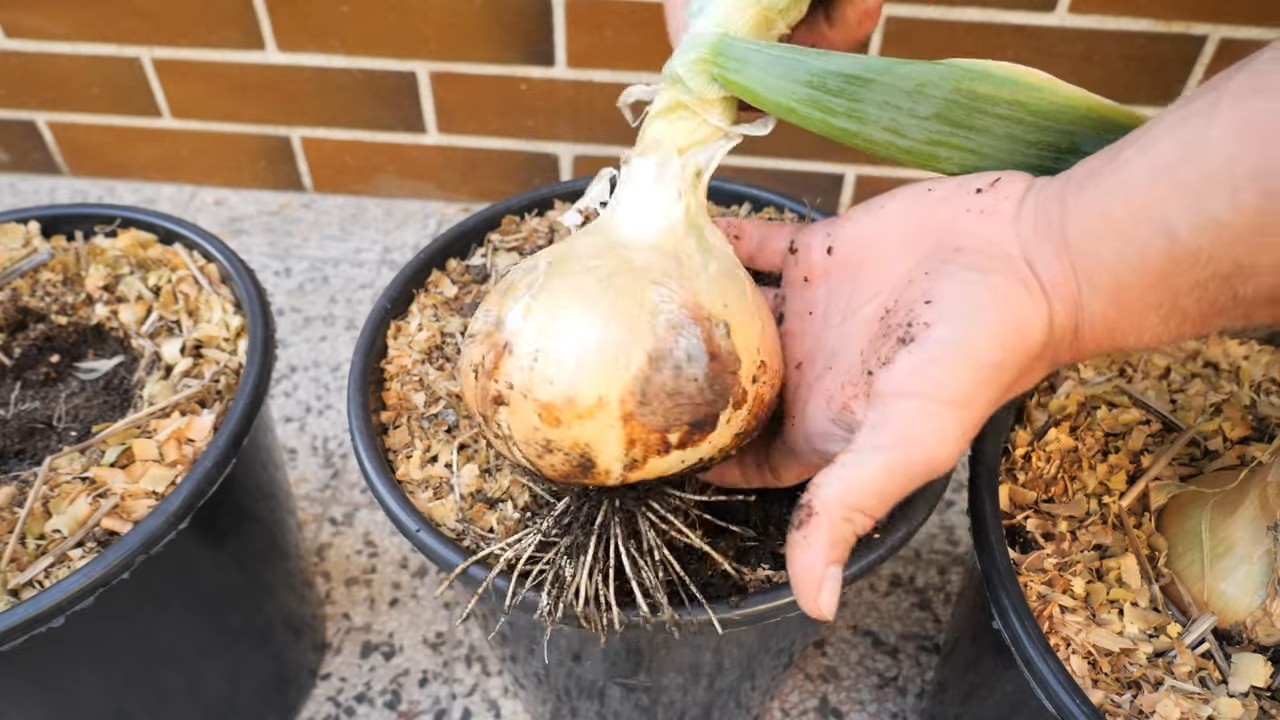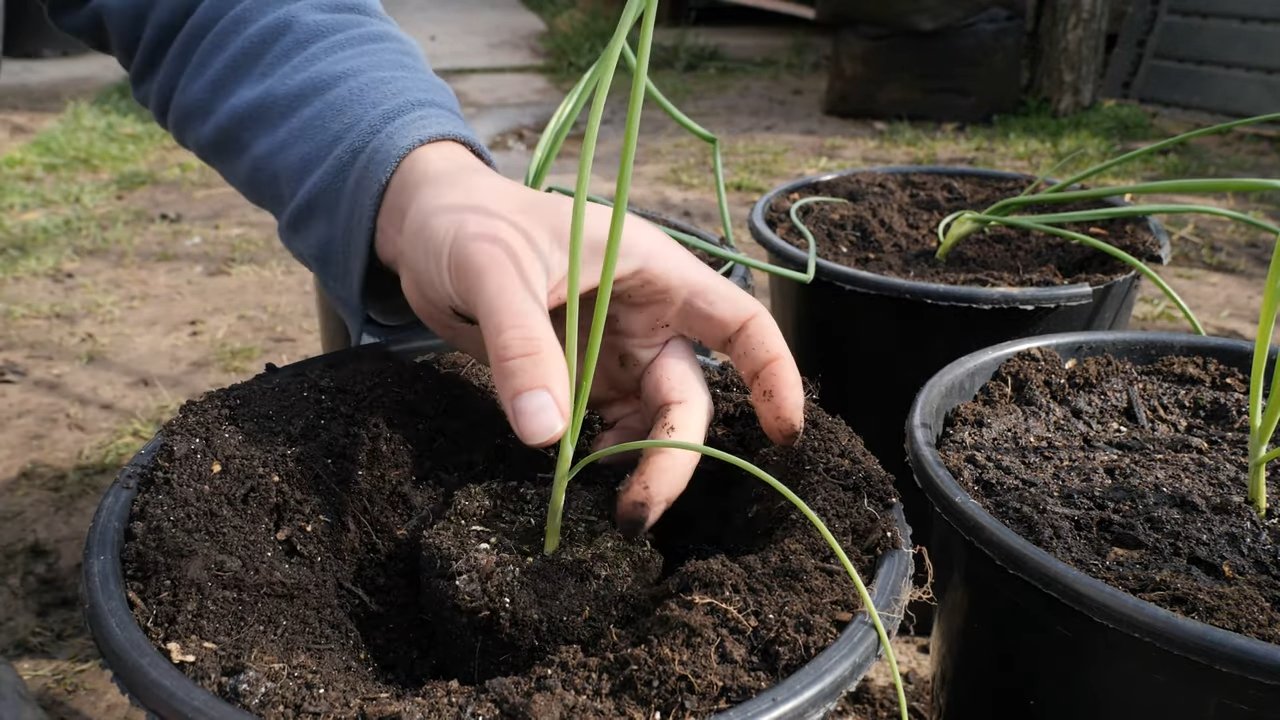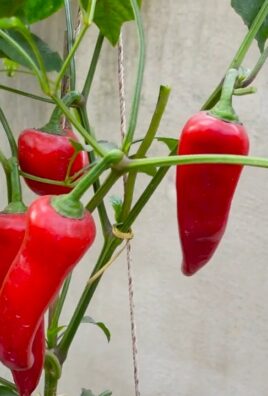Growing Onions in Containers: Unlock the secrets to a bountiful harvest, even without a sprawling garden! Have you ever dreamed of snipping fresh, flavorful onions right from your patio? Imagine the satisfaction of adding homegrown goodness to your meals, knowing exactly where your food comes from. This isn’t just a dream; it’s an achievable reality with container gardening!
Onions have been cultivated for millennia, with evidence suggesting their use dates back to ancient Egypt. They were valued not only for their culinary properties but also for their medicinal and even symbolic significance. Today, while we might not be building pyramids with onions, we can certainly build a thriving garden, one container at a time.
But why bother growing onions in containers? Well, for many of us, space is a premium. Apartment dwellers, balcony gardeners, and even those with limited yard space can still enjoy the pleasures of homegrown produce. Plus, container gardening offers greater control over soil quality, watering, and pest management, leading to healthier, happier onions. I’m excited to share some simple yet effective DIY tricks and hacks that will transform your container gardening experience and have you harvesting delicious onions in no time. Let’s get started!

Growing Onions in Containers: A Beginner’s Guide
Hey there, fellow gardening enthusiasts! Ever dreamt of snipping fresh onions right from your patio? Well, dream no more! Growing onions in containers is surprisingly easy and rewarding, even if you’re short on space. I’m going to walk you through everything you need to know to cultivate your own little onion patch in pots. Let’s get started!
Choosing the Right Onion Variety
First things first, not all onions are created equal when it comes to container gardening. Some varieties thrive better in pots than others. Here’s what I recommend:
* Bunching Onions (Scallions): These are a no-brainer! They grow quickly, don’t need a lot of space, and you can harvest them continuously.
* Shallots: These have a milder flavor and are also well-suited for container growing.
* Smaller Bulb Onions: Look for varieties like ‘White Lisbon’ or ‘Red Baron’. These mature faster and don’t require as much room as larger globe onions.
* Avoid Large Globe Onions: While technically possible, these need a lot of space and a long growing season, making them less ideal for containers.
Gathering Your Supplies
Okay, now that we’ve picked our onion type, let’s gather the necessary tools and materials. This is what you’ll need:
* Containers: Choose pots that are at least 6-8 inches deep for bunching onions and shallots, and 8-10 inches deep for bulb onions. Make sure they have drainage holes! Terra cotta or plastic pots work well.
* Potting Mix: Use a high-quality, well-draining potting mix. Avoid garden soil, as it can compact in containers and hinder drainage. I like to use a mix specifically formulated for vegetables.
* Onion Sets or Seeds: You can start onions from seeds or sets (small, immature bulbs). Sets are easier and faster, especially for beginners.
* Watering Can or Hose: For regular watering.
* Fertilizer: A balanced, slow-release fertilizer or liquid fertilizer.
* Trowel or Small Shovel: For planting.
* Optional: Mulch (straw, wood chips, or shredded leaves) to help retain moisture and suppress weeds.
Planting Your Onions
Alright, time to get our hands dirty! Here’s the step-by-step guide to planting your onions:
1. Prepare the Container: Fill your container with potting mix, leaving about an inch or two of space at the top. Gently pat down the soil.
2. Planting Onion Sets: If you’re using sets, make small holes about 4-6 inches apart (depending on the variety) and 1-2 inches deep. Place the set in the hole with the root end facing down and the pointed end facing up. Cover with soil and gently firm.
3. Planting Onion Seeds: If you’re starting from seeds, sow them about 1/2 inch deep and 1 inch apart. Cover with soil and gently firm. You’ll need to thin them out later if they germinate too closely together.
4. Water Thoroughly: After planting, water the container thoroughly until water drains out of the bottom. This helps settle the soil and encourages root growth.
5. Mulch (Optional): Add a layer of mulch around the onions to help retain moisture and suppress weeds. Be careful not to pile mulch directly against the onion stems.
Caring for Your Container Onions
Now that your onions are planted, it’s time to provide them with the care they need to thrive. Here’s what you need to do:
1. Sunlight: Onions need at least 6-8 hours of sunlight per day. Place your containers in a sunny location. If you don’t have enough natural sunlight, you can supplement with grow lights.
2. Watering: Water regularly, especially during dry periods. The soil should be consistently moist but not waterlogged. Check the soil moisture by sticking your finger about an inch into the soil. If it feels dry, it’s time to water.
3. Fertilizing: Feed your onions every 2-3 weeks with a balanced fertilizer. Follow the instructions on the fertilizer package. You can also use a liquid fertilizer diluted in water.
4. Weeding: Keep the container free of weeds. Weeds compete with onions for nutrients and water. Gently pull out any weeds that appear.
5. Thinning (If Starting from Seeds): Once your seedlings are a few inches tall, thin them out so that they are 4-6 inches apart. This will give them enough room to grow.
6. Pest and Disease Control: Keep an eye out for pests and diseases. Onions can be susceptible to onion maggots, thrips, and fungal diseases. If you notice any problems, take action immediately. You can use organic pest control methods like insecticidal soap or neem oil. Good air circulation can help prevent fungal diseases.
Harvesting Your Onions
The best part! Harvesting your homegrown onions. The timing depends on the type of onion you’re growing:
1. Bunching Onions (Scallions): You can start harvesting bunching onions when they are about 6-8 inches tall. Simply snip off the green tops as needed. They will continue to grow back.
2. Shallots: Harvest shallots when the tops start to turn yellow and fall over. Gently dig up the bulbs and let them cure in a dry, well-ventilated place for a week or two.
3. Bulb Onions: Harvest bulb onions when the tops start to turn yellow and fall over. Gently dig up the bulbs and let them cure in a dry, well-ventilated place for a week or two. Curing helps them develop a papery skin and improves their storage life.
Troubleshooting Common Problems
Even with the best care, you might encounter some problems along the way. Here are a few common issues and how to address them:
* Yellowing Leaves: This could be a sign of overwatering, underwatering, nutrient deficiency, or disease. Check the soil moisture and adjust your watering accordingly. Fertilize regularly and inspect the plants for signs of disease.
* Slow Growth: This could be due to insufficient sunlight, poor soil, or nutrient deficiency. Make sure your onions are getting enough sunlight and fertilize regularly.
* Pests: Inspect your plants regularly for pests. If you find any, take action immediately. Use organic pest control methods like insecticidal soap or neem oil.
* Fungal Diseases: Fungal diseases can be a problem in humid conditions. Ensure good air circulation around your plants and avoid overwatering. You can also use a fungicide if necessary.
Tips for Success
Here are a few extra tips to help you succeed with container onion gardening:
* Rotate Your Crops: Don’t plant onions in the same container year after year. Rotate your crops to prevent soilborne diseases.
* Use Companion Planting: Plant onions with other vegetables that benefit from their presence. Carrots, tomatoes, and lettuce are good companions for onions.
* Start with Good Quality Sets or Seeds: Choose sets or seeds from a reputable source.
* Be Patient: Onions take time to grow. Don’t get discouraged if you don’t see results immediately.
Enjoy Your Homegrown Onions!
Growing onions in containers is a fun and rewarding experience. With a little bit of care and attention, you can enjoy fresh, homegrown onions right from your patio. So, grab your pots, potting mix, and onion sets or seeds, and get started today! Happy gardening!

Conclusion
So, there you have it! Growing onions in containers is not only achievable, but it’s also a remarkably rewarding experience. We’ve walked through the steps, from selecting the right container and soil to nurturing your onion plants to a bountiful harvest. But why should you take the plunge and try this DIY trick?
Firstly, container gardening offers unparalleled convenience. Whether you have a sprawling backyard or a tiny balcony, you can enjoy fresh, homegrown onions right at your fingertips. No more trips to the grocery store for subpar produce! Secondly, you have complete control over the growing environment. You can tailor the soil composition, watering schedule, and sun exposure to perfectly suit your onions’ needs, resulting in healthier, more flavorful bulbs.
Beyond the practical benefits, growing onions in containers is simply a fun and engaging activity. It’s a chance to connect with nature, learn about the life cycle of plants, and experience the satisfaction of nurturing something from seed to table. Plus, it’s a great way to reduce your carbon footprint and contribute to a more sustainable lifestyle.
But the possibilities don’t end here! Feel free to experiment with different onion varieties. Try growing red onions for their vibrant color and mild flavor, or shallots for their delicate sweetness. You can also companion plant your onions with herbs like rosemary or thyme to deter pests and enhance their flavor. Consider adding a layer of mulch to your containers to help retain moisture and suppress weeds.
And don’t forget about the green onions! You can harvest the green tops of your onion plants throughout the growing season for a continuous supply of fresh flavor. Simply snip off the green shoots as needed, leaving the bulb to continue growing.
Growing onions in containers is a game-changer for any gardener, regardless of experience level. It’s a simple, effective, and incredibly satisfying way to enjoy fresh, homegrown onions all season long.
We encourage you to give this DIY trick a try. Don’t be afraid to experiment and find what works best for you. And most importantly, share your experience with us! We’d love to hear about your successes, challenges, and any tips you’ve discovered along the way. Post photos of your container gardens, share your favorite onion recipes, and let’s build a community of container onion growers!
This method of growing onions is particularly beneficial for those with limited space, poor soil conditions, or a desire to keep their plants close at hand. Imagine stepping out onto your patio and harvesting fresh onions for your dinner – it’s a culinary dream come true!
So, grab your containers, soil, and onion sets, and get ready to embark on a rewarding gardening adventure. You’ll be amazed at how easy and enjoyable it is to grow your own onions in containers. Happy gardening!
Frequently Asked Questions
What is the best type of container for growing onions?
The ideal container for growing onions should be at least 6-8 inches deep and wide to accommodate the bulb’s growth. A wider container is preferable if you plan to grow multiple onions together. Consider using plastic pots, terracotta pots, or even repurposed containers like buckets or tubs. Ensure the container has drainage holes to prevent waterlogging, which can lead to root rot. Fabric pots are also a great option as they allow for excellent drainage and aeration.
What kind of soil should I use for growing onions in containers?
Onions thrive in well-draining, fertile soil. A good potting mix specifically formulated for vegetables is an excellent choice. You can also create your own mix by combining equal parts of potting soil, compost, and perlite or vermiculite. Compost provides essential nutrients, while perlite or vermiculite improves drainage and aeration. Avoid using garden soil, as it can be too heavy and compact for container gardening.
How often should I water my container onions?
Water your container onions regularly, especially during dry periods. The soil should be consistently moist but not waterlogged. Check the soil moisture by sticking your finger about an inch deep. If the soil feels dry, it’s time to water. Water deeply until excess water drains out of the drainage holes. Reduce watering frequency during cooler or rainy weather.
How much sunlight do onions need when grown in containers?
Onions require at least 6-8 hours of direct sunlight per day to thrive. Choose a sunny location for your container garden, such as a south-facing balcony or patio. If you don’t have enough natural sunlight, you can supplement with grow lights. Rotate the containers regularly to ensure even sun exposure for all sides of the plants.
When is the best time to plant onions in containers?
The best time to plant onions in containers depends on your climate. In colder regions, start onion sets indoors 6-8 weeks before the last expected frost. Transplant them outdoors into containers once the weather warms up and the risk of frost has passed. In warmer regions, you can plant onion sets directly into containers in the fall for a spring harvest.
How do I fertilize my container onions?
Onions are heavy feeders and benefit from regular fertilization. Use a balanced fertilizer with an NPK ratio of 10-10-10 or 14-14-14. Apply the fertilizer according to the package instructions, typically every 2-3 weeks during the growing season. You can also use organic fertilizers like compost tea or fish emulsion. Avoid over-fertilizing, as this can lead to excessive foliage growth at the expense of bulb development.
How do I prevent pests and diseases in my container onions?
To prevent pests and diseases, start with healthy onion sets and use a well-draining potting mix. Monitor your plants regularly for signs of pests like onion maggots or thrips. If you spot any pests, treat them with insecticidal soap or neem oil. To prevent fungal diseases, avoid overwatering and ensure good air circulation around the plants. You can also apply a fungicide if necessary. Companion planting with herbs like rosemary or thyme can also help deter pests.
Can I grow onions from seed in containers?
Yes, you can grow onions from seed in containers, but it requires more patience and time. Start onion seeds indoors 8-10 weeks before the last expected frost. Sow the seeds in a seed-starting mix and keep them moist. Once the seedlings are large enough to handle, transplant them into individual pots. Gradually harden them off before transplanting them into containers outdoors.
How do I harvest my container onions?
You can harvest green onions (scallions) at any time by snipping off the green tops. For bulb onions, wait until the tops start to turn yellow and fall over. This indicates that the bulbs are mature. Gently pull the onions from the soil and let them cure in a warm, dry place for a week or two. Curing helps to toughen the outer skin and prevent rot.
Can I reuse the soil from my container onions?
It’s generally not recommended to reuse the soil from your container onions without amending it. Onions are heavy feeders and deplete the soil of nutrients. Before reusing the soil, remove any plant debris and add fresh compost and fertilizer to replenish the nutrients. You can also sterilize the soil by baking it in the oven or microwaving it to kill any potential pathogens. However, it’s often best to start with fresh potting mix each season to ensure optimal growth.




Leave a Comment